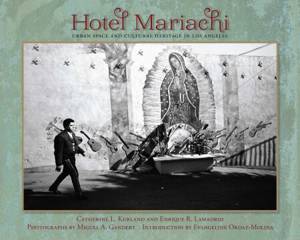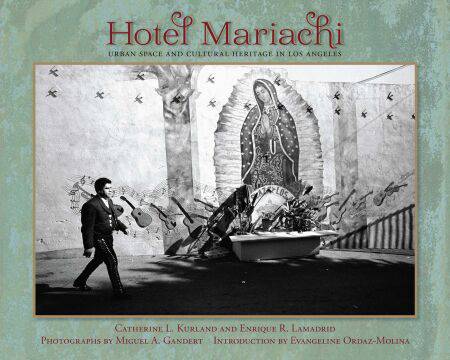
- Afhalen na 1 uur in een winkel met voorraad
- Gratis thuislevering in België vanaf € 30
- Ruim aanbod met 7 miljoen producten
- Afhalen na 1 uur in een winkel met voorraad
- Gratis thuislevering in België vanaf € 30
- Ruim aanbod met 7 miljoen producten
Zoeken
€ 26,83
+ 26 punten
Uitvoering
Omschrijving
In Boyle Heights, gateway to East Los Angeles, sits the 1889 landmark “Hotel Mariachi,” where musicians have lived and gathered on the adjacent plaza for more than half a century. This book is a photographic and ethnographic study of the mariachis, Mariachi Plaza de Los Angeles, and the neighborhood. The newly restored brick hotel embodies a triumphant struggle of preservation against all odds, and its origins open a portal into the Mexican pueblo’s centuries-old multiethnic past.
Miguel Gandert’s compelling black-and-white images document the hotel and the vibrant mariachi community of the “Garibaldi Plaza of Los Angeles.” The history of Hotel Mariachi is personal to Catherine López Kurland, a descendant of the entrepreneur who built it, and whose family’s Californio roots will fascinate anyone interested in early Los Angeles or Mexican American history. Enrique Lamadrid explores mariachi music, poetry, and fiestas, and the part Los Angeles played in their development, delving into the origins of the music and offering a deep account of mariachi poetics. Hotel Mariachi is a unique lens through which to view the history and culture of Mexicano California, and provides touching insights into the challenging lives of mariachi musicians.
Miguel Gandert’s compelling black-and-white images document the hotel and the vibrant mariachi community of the “Garibaldi Plaza of Los Angeles.” The history of Hotel Mariachi is personal to Catherine López Kurland, a descendant of the entrepreneur who built it, and whose family’s Californio roots will fascinate anyone interested in early Los Angeles or Mexican American history. Enrique Lamadrid explores mariachi music, poetry, and fiestas, and the part Los Angeles played in their development, delving into the origins of the music and offering a deep account of mariachi poetics. Hotel Mariachi is a unique lens through which to view the history and culture of Mexicano California, and provides touching insights into the challenging lives of mariachi musicians.
Specificaties
Betrokkenen
- Auteur(s):
- Uitgeverij:
Inhoud
- Aantal bladzijden:
- 120
- Taal:
- Engels
- Reeks:
Eigenschappen
- Productcode (EAN):
- 9780826353733
- Verschijningsdatum:
- 29/10/2013
- Uitvoering:
- E-book
- Beveiligd met:
- Adobe DRM
- Formaat:
- ePub

Alleen bij Standaard Boekhandel
+ 26 punten op je klantenkaart van Standaard Boekhandel
Beoordelingen
We publiceren alleen reviews die voldoen aan de voorwaarden voor reviews. Bekijk onze voorwaarden voor reviews.








